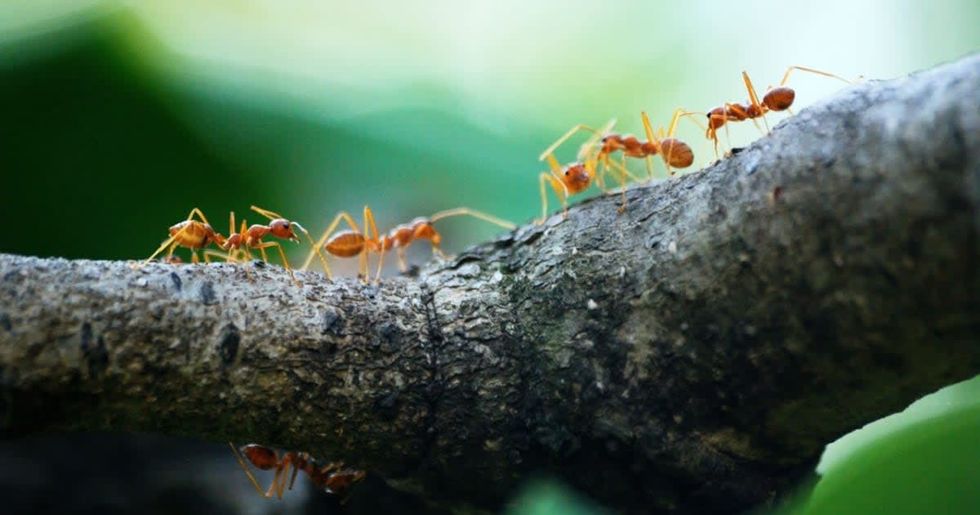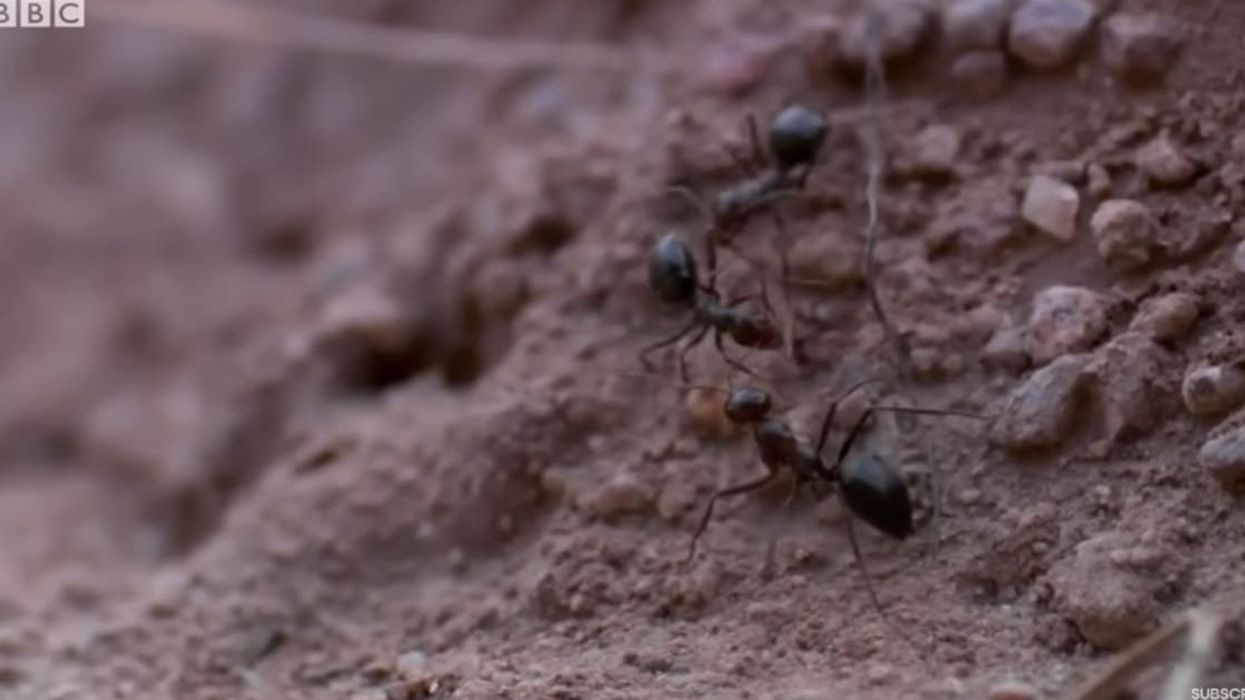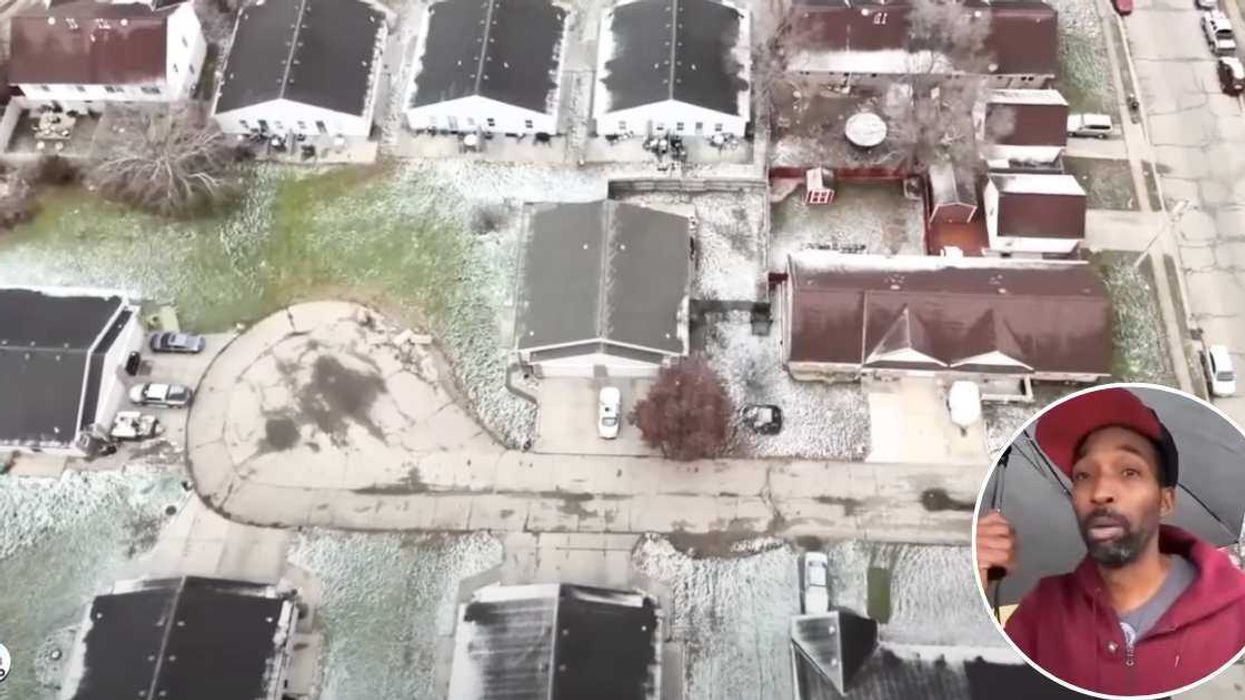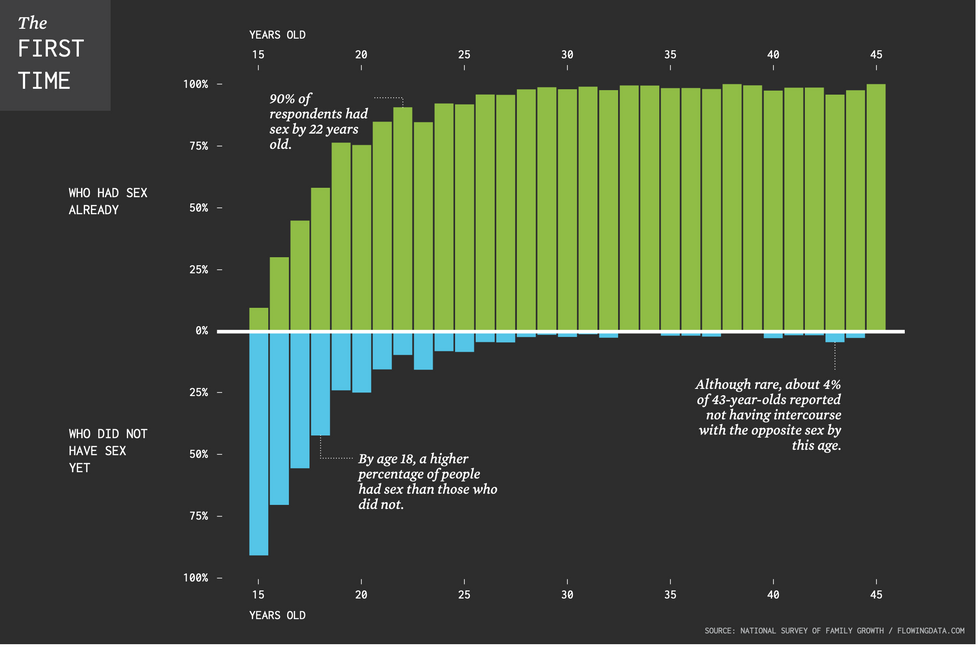Ants are undeniably fascinating creatures, known for their incredible coordination and disciplined behavior. While their "superpowers" were fictionalized in the movie Ant-Man, these tiny insects still inspire us with their remarkable capabilities. Their real-world feats offer insight into how they thrive on our planet.
According to the Daily Mail, scientists recently uncovered a major discovery: an elaborate underground ant city that once housed millions of ants. The BBC-backed documentary Ants: Nature's Secret Power reveals the full extent of this astonishing structure. Located in Brazil, the vast underground network includes roadways, pathways, and even gardens.
The documentary sheds light and reveals that this underground city was once home to leafcutter ants. Ants are generally led by the ant Queen and it is the leader's responsibility to create an army of ants to run this form of social structure. Therefore, an ant queen gathers 300 million sperm from her male counterparts. The ant colony is similar to a superorganism and therefore it is tasked with organizing itself to build a giant house. At the same time, these ants have different roles assigned to them, such as gathering vegetation or constructing the colony.
According to this documentary, scientists were tasked with excavating this structure as shown in the video,10 tonnes of concrete were poured into these holes on the surface that the ants used as air conditioning ducts, to reveal the tunnels. The process was time-consuming as it has been said to have taken 10 days as the maze-like tubes were stretching as wide as an area of 500 square feet and reached 26 feet below the surface.
This ant civilization deserved credit for its overall structure as the documentary states that these tiny creatures dug out about 40 tonnes of the earth altogether to build their megacity. These ants were excellent planners as well and their dug pathways helped in efficient transportation and ventilation, with numerous pathways connecting the main chambers and secondary roads found off the main paths. They were engineers in their own right.

On the other hand, these worker ants used to gather vegetation to create fungal gardens. These gardens heavily relied on leaves and provided food for the ant larvae. Other ants were assigned departments like waste management and garbage removal, and were also tasked with preventing parasites like the phorid fly. The bigger and bulkier ants were given the heavier duties of guarding the fortress.
The latest excavation of the Ant City has led scientists to believe that the mammoth structure is the "ant equivalent of the Great Wall of China."
This article originally appeared six months ago.


















 A symbol for organ donation.Image via
A symbol for organ donation.Image via  A line of people.Image via
A line of people.Image via  "You get a second chance."
"You get a second chance." 


 36 is the magic number.
36 is the magic number. According to one respondendant things "feel more in place".
According to one respondendant things "feel more in place". 
 Some plastic containers.Representational Image Source: Pexels I Photo by Nataliya Vaitkevich
Some plastic containers.Representational Image Source: Pexels I Photo by Nataliya Vaitkevich Man with a plastic container.Representative Image Source: Pexels | Kampus Production
Man with a plastic container.Representative Image Source: Pexels | Kampus Production
 Canva
Canva It's easy to let little things go undone. Canva
It's easy to let little things go undone. Canva
 Photo by
Photo by 
 Teens are waiting longer than at any point in the survey’s history. Canva
Teens are waiting longer than at any point in the survey’s history. Canva Chart on the age of a person’s first time having sex.National Survey of Family Growth/flowing data.com | Chart on the age of a person’s first time having sex.
Chart on the age of a person’s first time having sex.National Survey of Family Growth/flowing data.com | Chart on the age of a person’s first time having sex.